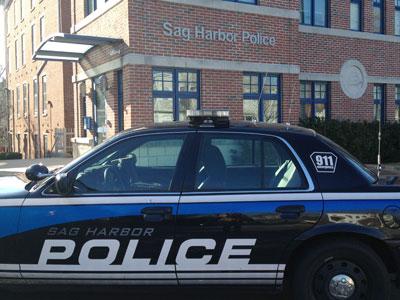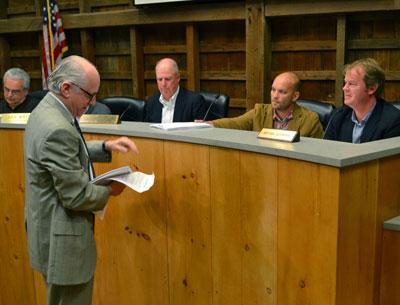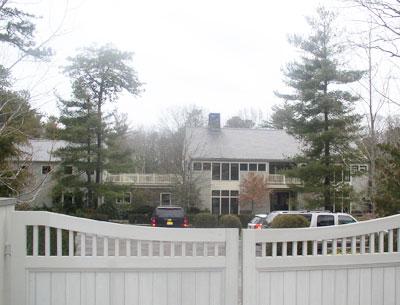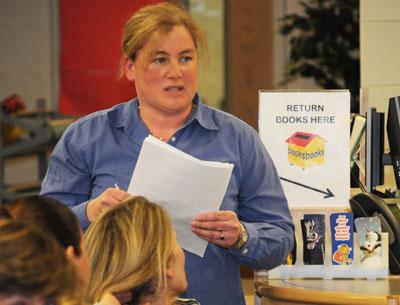East Hampton Chabad Draws Objections
East Hampton Chabad Draws Objections
An ongoing effort to resolve outstanding building permit issues and bring aspects of the Chabad House on Woods Lane into compliance with village code, brought representatives of the orthodox synagogue, and some unhappy neighbors, to the East Hampton Village Zoning Board of Appeals on Friday.
The property includes a single-family residence being used by Chabad Lubavitch of the Hamptons for worship services, a second house occasionally used by guests, and a two-story structure originally used as a garage and now housing a ritual immersion bath, known as a mikvah, a room for introspection and study, two bathrooms, and an unfinished storage space.
The Chabad House’s application for area variances and a special permit to allow the buildings at 13 Woods Lane to be classified as a religious institution drew protests from two neighbors.
While in the process of refinancing, Chabad applied for certificates of occupancy and discovered a prior zoning board determination that limited the garage to storage use only, said Leonard Ackerman, an attorney representing the organization. “That’s what brings us here.”
Under orthodox religious law, Mr. Ackerman said, “you cannot have a temple — a shul — without having a mikvah. That’s why the mikvah was installed. . . . We’re here for a special permit because it’s a nonresidential use.”
Mr. Ackerman asked the board to consider the Religious Land Use and Institutionalized Persons Act, a law enacted in 2000 that grants religious institutions a means to avoid burdensome zoning law restrictions. He asserted that there is no evidence of adverse impact on adjacent residences, the business district, or on the nearby Jewish Center of the Hamptons. “It’s the same house, same structure. We’re not changing anything, we’re not adding anything. The house is the same as it’s been for 70 years.”
This assertion clashed with that of Jennifer Sibony, who lives at 8 Ocean Avenue. “I live next to the mikvah, which is one foot away from my property line,” she told the board. “As soon as the mikvah was built, we complained to Rabbi [Leibel] Baumgarten that the pool pump in the back made so much noise that our son couldn’t even sleep in his bedroom, because it went constantly, 24 hours a day. We asked them to enclose it, and to put a fence up.”
Ms. Sibony said that after numerous requests, Rabbi Baumgarten installed a fence, but the noise issue remained. “I would ask that there is a fence put up around that, maybe with insulation on the inside. We’ve also asked for a fence between the mikvah and the end of our property line, so we don’t see people walking back and forth, strangers, all the time.”
The pool filter is uncovered, said Frank Newbold, a Z.B.A. member. “To get the [certificate of occupancy], it necessarily will be covered,” he told Ms. Sibony, before informing Mr. Ackerman that landscaping that will satisfy the neighbor’s privacy and noise concerns will be required in order for the application to be granted.
“We’re going to work together,” Mr. Ackerman told Ms. Sibony.
Robert Petrozzo, who lives across from the Chabad on Woods Lane, complained about the many cars parked on the road, which he said sometimes overflow to the other side of the street, in front of his house and those of his neighbors. This, he said, makes it difficult to get in and out of his driveway. “If this is going to be opened up to official religious establishment, there will be more people coming,” he said. “It’s a safety issue, and also, aesthetically, it looks horrible. . . . My concern is that on any given Friday or Saturday you can drive by 13 Woods Lane and there are a number of cars on the road.”
If the special permit is granted, Mr. Newbold wondered, is the use going to change dramatically?
“Maybe not practically speaking,” said Linda Riley, the village attorney. “But what it is now is a one-family residence. By granting this special permit, you’ll be granting a permit for the entire property to be used as a synagogue. The only permitted use on this property at this time is a one-family residence.”
Mr. Ackerman told the board that he will follow up with the neighbors to address their concerns, and the hearing was closed.
Also at the meeting, the board approved Lumber Lane Associates’ application to build affordable apartments on the second floor of a commercial building on Lumber Lane. The request, by Pat Trunzo, a contractor and co-owner of the building, had prompted the village board to adopt a code amendment eliminating a requirement that anyone who cannot provide mandated off-street parking pay a $10,000-per-space fee to the village’s parking fund, provided the property owners are creating affordable housing.
The approval is conditional. Lumber Lane Associates must record a declaration of covenants and restrictions stating that the apartments will remain as affordable rental units in perpetuity and that the warehouse space in the building not be converted to any use without the board’s approval. The owner will also have to install landscaping approved by the village’s design review board.







